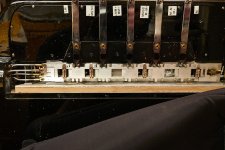Chickers
Active member
I have a 1970's vintage Monarch accordion 41 / 120.
A very clean, well maintained accordion, that also has a nice pleasant sound.
My problem is the "Bassoon" seems to automatically come in while playing.
No matter which other shifter I may press, in just a few minutes, the "bassoon"
come on.
Any comments and / or ideas on how to correct this issue ??
Thanks,
CHICKERS, Ohio, USA
A very clean, well maintained accordion, that also has a nice pleasant sound.
My problem is the "Bassoon" seems to automatically come in while playing.
No matter which other shifter I may press, in just a few minutes, the "bassoon"
come on.
Any comments and / or ideas on how to correct this issue ??
Thanks,
CHICKERS, Ohio, USA



